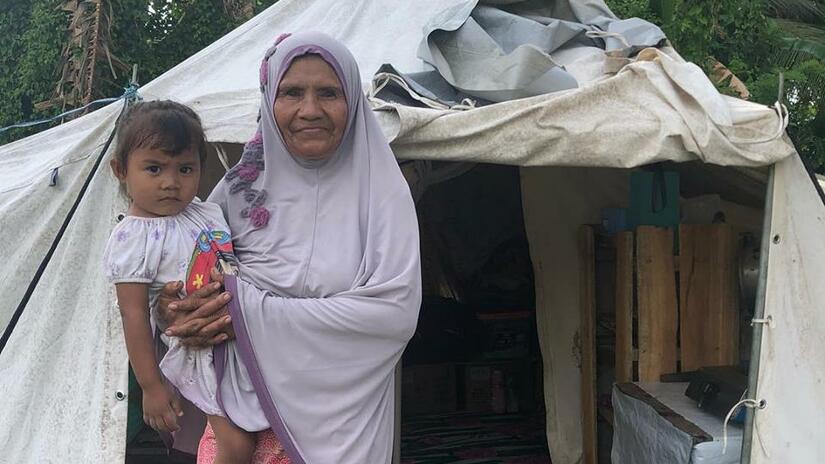Palu/Kuala Lumpur, 25 March 2019 – Six months after Sulawesi was hit by a powerful and shallow earthquake, tsunami and liquefaction, survivors face a painfully slow and complex recovery.
On 28 September 2018, a series of strong earthquakes struck Central Sulawesi, the worst a shallow, magnitude 7.4. The earthquake triggered tsunami waves of up to three metres high. The tsunami in turn caused landslides and liquefaction that swallowed entire villages whole. In all, the triple disaster killed 4,340 people.[1]
Within minutes, trained staff and volunteers from the Indonesian Red Cross (Palang Merah Indonesia or PMI) were in action, leading search and rescue efforts and providing first aid and other life-saving help. In the six months since, a massive emergency response operation by the Red Cross, supported by the International Federation of Red Cross and Red Crescent Societies (IFRC), has reached 119,400 people, with assistance including healthcare for 13,300 people, 16 million litres of safe drinking water distributed to 69,400 people, emergency shelter tools distributed to 100,000 people, psychosocial support given to 13,000 people and 2,300 people helped to trace family members.
Indonesian Red Cross Head of Disaster Management Arifin M. Hadi said:
“This disaster was violent and unexpected and completely devastated communities right across Sulawesi. The response was driven by local organizations and expertise. Indonesian Red Cross volunteers from the affected areas were the first to respond, and they were backed up by the mobilization of 1,426 staff and volunteers from all over Indonesia.
“Many of our own people were affected by the earthquake, tsunami and liquefaction but went into action to help others who were even worse off,” said Arifin M. Hadi.
With the emergency phase now over, the long, complex recovery and rebuilding process has only just begun. As of 12 February, 173,000 people were still homeless,[2] many uncertain where they will be able to rebuild because their land has been swallowed by liquefaction or is at risk of future tsunamis. Aftershocks continue to strike fear even for people whose homes are undamaged. The triple disaster also robbed families of their income, destroying fishing boats and agricultural irrigation, damaging businesses that employed people.
Despite the devastation, survivors speak of their determination to pick up the pieces of their lives. Suriyati, who goes by one name, and used to live in coastal town Sirenja, said:
"When the disaster first happened, I was terrified, and left everything to God. But now survival mode has kicked in, and we're doing whatever we can to build our lives again. Some of my neighbours have begun small businesses to help make ends meet, as the earthquake and tsunami destroyed our farms."
IFRC Indonesia Head of Country Jan Gelfand said:
“It has only been six months since the catastrophe and recovery is understandably slow. We’ve seen from major disasters around the world that cities and communities take years to build but only seconds to destroy. How can you rebuild a coastline, city or community when large parts of it are simply swallowed by the earth? We will continue to stand by people over the next years as they recover and rebuild.”
In December 2018, IFRC revised its emergency appeal upwards to 38.9 million Swiss francs (38.6 million US dollars / 34 million euros) to support the Indonesian Red Cross to reach 167,000 people affected by disasters in Lombok, Sulawesi and the Sunda Straits.
[1] https://bnpb.go.id/infografis-gempabumi-m74-tsunami-sulawesi-tengah
[2] https://bnpb.go.id/infografis-gempabumi-m74-tsunami-sulawesi-tengah
Press release
Six months later: 'Morocco remembers, so should we'— IFRC's call for continued support
Six months later: 'Morocco remembers, so should we'— IFRC's call for continued support
| Press release

